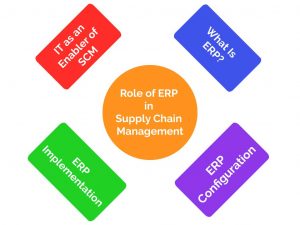Companies often do not give much thought to the design of their supply chains. They often focus on cost reduction through low-cost purchasing, manufacturing, or logistics. This can translate into supply chains that do not necessarily support the overall business strategy.
The way a company competes in the marketplace is called a competitive priority. Supply chain strategy and supply chain design greatly depend on a company’s competitive priorities. The companies that follow this process—companies like Amazon, Wal-Mart, Toyota, Nike, McDonald’s, and IBM—have been very successful. Unfortunately, too many companies just mimic others in their industry and create supply chains that look just like that of their competitors. This does not lead to a strong competitive advantage—it simply leads to being a follower in one’s industry.
There are five primary competitive priorities:
- Cost
- Time
- Innovation
- Quality
- Service
Let’s look at each of these competitive priorities and show how each results in differing strategic supply chain designs.
Competing on Cost
If the company’s business strategy is to compete on cost, then the supply chain strategy must be designed to support this. Companies that compete on cost offer products at the lowest price possible. These companies are either maintaining market share in a commodity market, or they are offering low prices to attract cost-sensitive buyers. Once a company’s business strategy has determined that the company will compete on cost, the other functional strategies—including the supply chain strategy—should be designed to support this.
For example, competing on cost requires highly efficient, integrated operations that have cut costs out of the system. The supply chain plays a critical role in keeping both product and supply chain costs down. It may also require going to the least-expensive suppliers rather than focusing on high-quality components. The low-cost supply chain focuses on meeting efficiency-based metrics such as asset utilization, inventory days of supply, product costs, and total supply chain costs. The operation strategy is designed for product and process standardization, as are operations of the suppliers. Notice that the supply chain design would be different had the chosen business strategy focused on something else, such as competing on customization. In that case, the cost would be less of an issue as would be the ability to provide a wide range of customized products.
Although Dell Computer Corporation has been a model of supply chain excellence, Dell does not compete on cost. In fact, Dell does not claim to offer the least expensive computers, but merely customized computers in record time. That is a major difference. Dell’s computer prices are within the industry range. This is unlike Wal-Mart, which promises the lowest prices but not special customized products. The important thing is that each company’s supply chain is designed to support the chosen business strategy.
Although efficiency and low cost are hallmarks of excellence, they cannot be achieved at the expense of service, innovation, or quality, if one of these is an element of the business strategy. An example of this is the apparel industry, where manufacturers typically outsource production to Southeast Asia. The manufacturers insist on fixed production schedules to keep their costs low. This, however, impacts their flexibility and can hurt retailers when demands unexpectedly shift, such as when there is an unexpected surge of demand. This limits retailers in their ability to respond to demand. For many retailers, being out of stock on a regular basis can play havoc with customers and erode market share. Focusing on price alone, without considering other aspects of the business strategy, may result in a poor supply chain strategy.
Competing on Time
Time is one of the most important ways companies compete today. Companies in all industries are competing to deliver high-quality products in as short a time as possible. Amazon, FedEx, Lens Crafters, and United Parcel Service (UPS) are all examples of companies that compete on time. Customers today are increasingly demanding short lead times and are not willing to wait for products and services. Companies that can meet the needs of customers who want fast service are becoming leaders in their respective industries.
Making time a competitive priority means competing based on all time-related dimensions, such as rapid delivery and on-time delivery. Rapid delivery refers to how quickly an order is received; on-time delivery refers to the number of times deliveries are made on time. When time is a competitive priority, the job of the operations function is to critically analyze the system and combine or eliminate processes to save time. Companies can use technology to speed up processes or they can rely on an flexible workforce to meet peak demand periods and eliminate unnecessary steps in the production process.
FedEx is an example of a company that has chosen to compete on time. The company’s slogan is that it will “absolutely, positively” deliver packages on time. To support this business strategy, the entire supply chain has been set up to support these criteria. Bar code technology is used to speed up processing and handling, and the company has discovered that it can provide faster service by using its own fleet of airplanes. This technology has enabled FedEx to compete on time, but it is costly. Consequently, FedEx neither competes on cost nor does it make any claims regarding its prices. Its business strategy is to compete on time, and all the other functions are aligned to support this strategy.
Competing on Innovation
Companies whose primary strategy is innovation focus on developing products that the customers perceive as “must-haves” and thereby pull the product through the supply chain with significant demand. Examples of such companies include Sony and Nike—companies that deliver innovative products customers want. Due to the “must-have” nature of these products, these companies can typically command a premium price, which is to their advantage because competing on innovation requires a sizable financial commitment. In addition to the supply chain capability, the real ability to compete on this dimension lies in superior marketing and product development, which is directly related to the supply chain.
Companies that compete on innovation typically have a very short window of opportunity before the imitators enter the market and begin to steal market share. Companies competing on innovation are aware that they must enter the market early with an innovative design. The supply chains of these companies typically focus on two features: speed and product design. This requires a carefully integrated supply chain that enables collaboration on product design between suppliers and manufacturers. Manufacturers with this type of supply chain have to have both internal integrations between functions and integration externally with suppliers.
Another challenge for innovative supply chains is the ability to quickly raise production volumes should demand suddenly increase. An innovative product doesn’t accomplish much if the company cannot quickly deliver a large volume of the product to the market to meet demand. Often this cannot be accomplished by one company’s manufacturing process alone, and the ability to access production capacity when needed provides a significant competitive advantage. That is why most of these companies. Such as Nike, are “virtual companies.” This means that marketing and product design are their strength, yet they outsource all the other aspects of their supply chain and manufacturing processes, albeit through a tightly controlled system.
Competing on Quality
Competing on quality means that a company’s products and services are known for their premium nature. Two important elements of this competitive priority are consistency and reliability. Examples of companies known for competing on quality are Mercedes, General Electric, and Motorola. Many aspects of the supply chain are altered when companies compete on quality versus another dimension, such as cost. This includes sourcing of components. As well as the implementation of concepts such as total quality management (TQM) and Six Sigma throughout the entire supply chain. This means embedding quality in all aspects of transportation, delivery, and packaging. This is particularly challenging when items are perishable, fragile, or of high value, such as luxury goods.
As supply chain management is a boundary-spanning activity, an important attribute of competing on quality is product traceability. This means that the supply chain has the ability to easily trace a product from point of origin in the supply chain, through to the customer, and back down the supply chain in the case of returns. This feature is increasingly becoming important with greater emphasis on security and sustainability. Radiofrequency identification (RFID) tags have provided excellent product traceability. Consider industries where this might be of particular importance, such as the pharmaceutical industry, where safety is critical. Another industry is the area of luxury goods, where counterfeiting is a problem, and traceability is very important in the identification of goods.
Competing on Service
Competing on service means that a company understands the dimensions that its target customers define as high service and has chosen to tailor its products to meet those specific needs. An important aspect of this strategy is that these companies typically build customer loyalty, which can often guarantee continued sales. These companies typically have exceptional order fulfillment systems, with fast invoicing that enables them to be consistent and reliable. These companies typically do not compete on cost and cannot offer the lowest-priced product. However, their target market is one that wants high-quality service and is willing to pay the extra cost.
From an operational viewpoint, companies with superior customer service often avoid unnecessary costs related to expediting orders or the costs of product returns, often faced by other companies. These companies also have a strong ability to segment their customer based on perceived value. This way they can offer services of one type to one market and a modified version to another. For these firms, the relationship between product cost and profitability is well defined. Consequently, highly customized services that are costly to deliver are only offered for customers who meet strict business criteria and tend to be in the high-value segment.
Why Not Compete in All Dimensions?
Successful companies understand that they cannot effectively compete on all dimensions, as they cannot be all things to all people. This is a very important and difficult point for most companies, as they typically want to be good at everything. The companies that succeed are those that understand which dimensions to excel on and are able to focus their energies on those dimensions. This does not mean that a company will have poor performance on the other dimensions. In fact, companies have to continually trade off one competitive dimension for another. However, this means that a company should have merely satisfactory performance, or stay within the norms of the industry, on those strategically less important dimensions.
Two important concepts that companies need to monitor order winners and order qualifiers. Order winners are those characteristics that win the company orders in the marketplace. Order qualifiers are those characteristics that will qualify the company to be a participant in a particular market. This means that a company just needs to stay within the industry standard on its order qualifiers to ensure that it is on par with competitors. However, when it comes to ordering winners—that is where it should excel.
Recall that a supply chain must be designed to support the business strategy. So alignment between the two should be a top priority. It should be remembered, however, that strategy is a dynamic rather than a static process. As such, strategies change over time, and supply chains must adapt accordingly.




